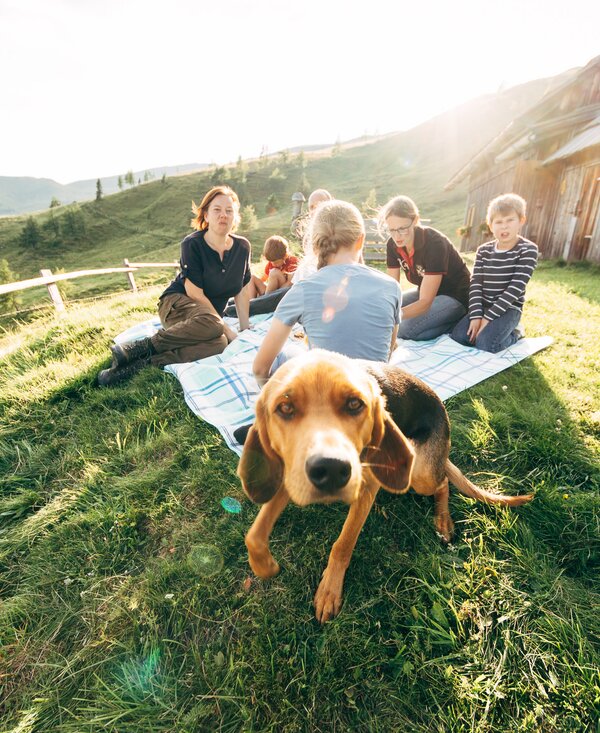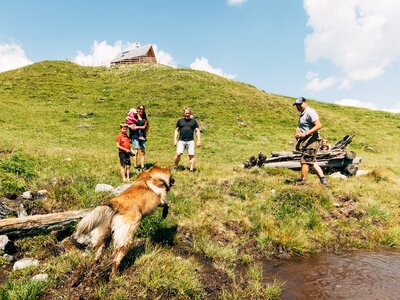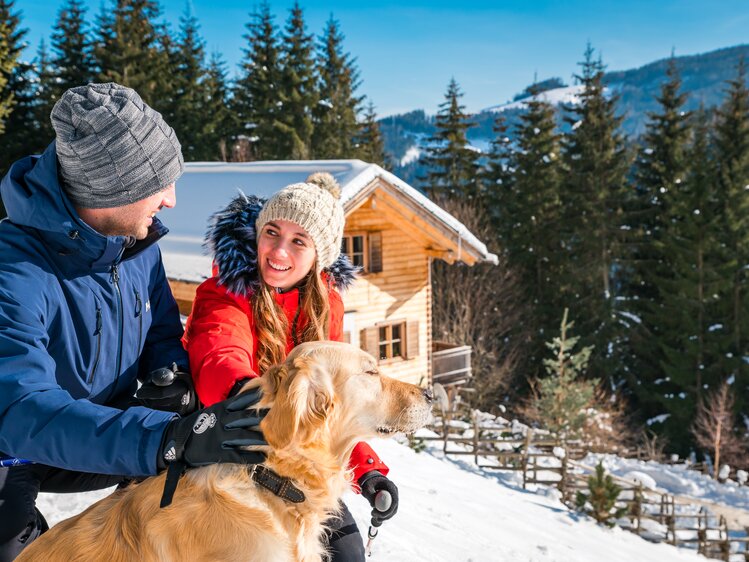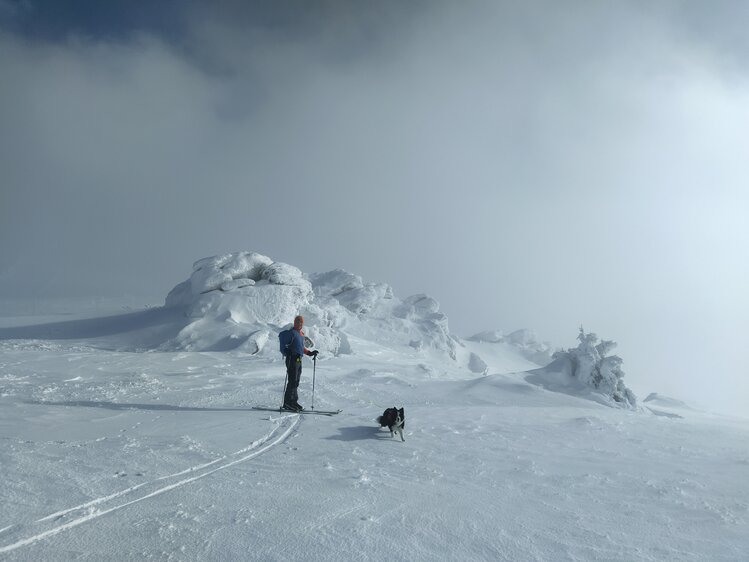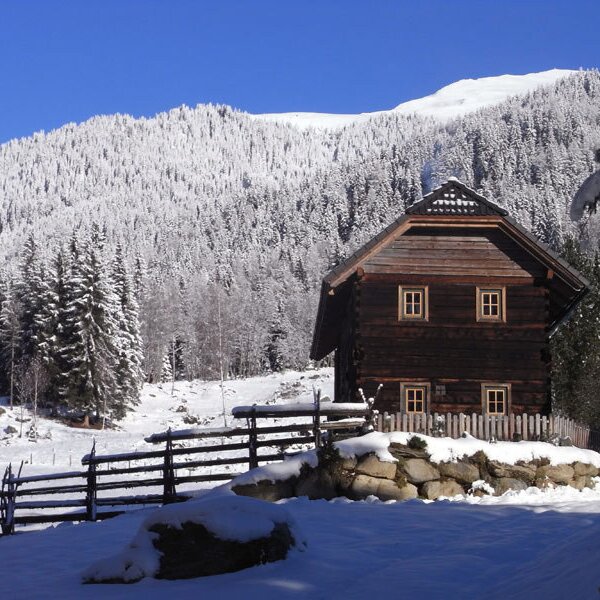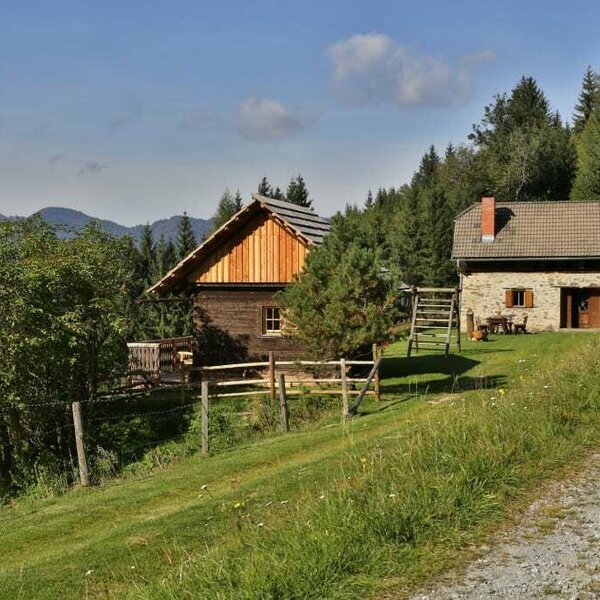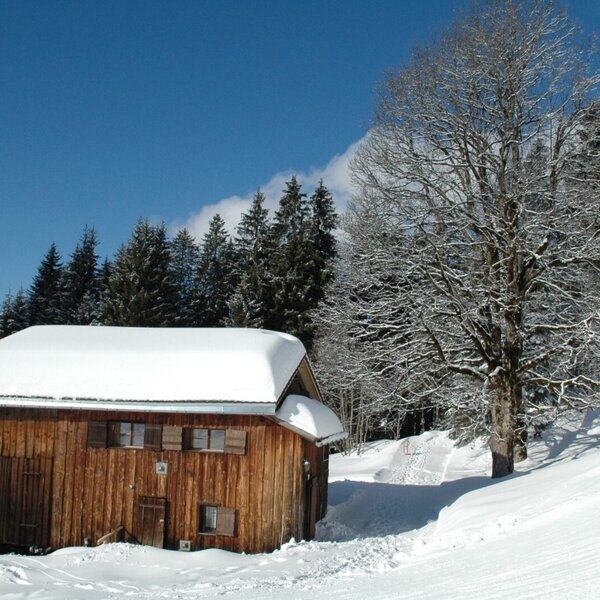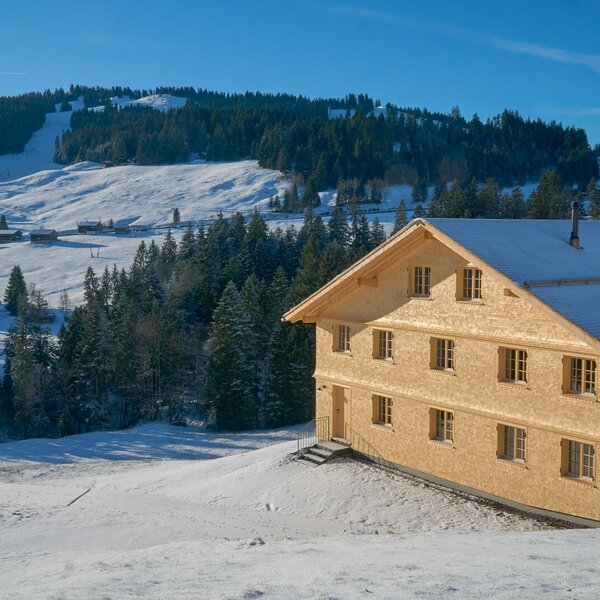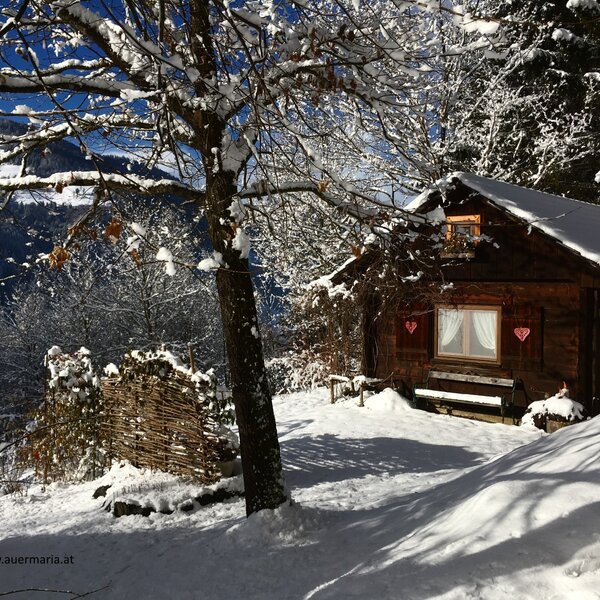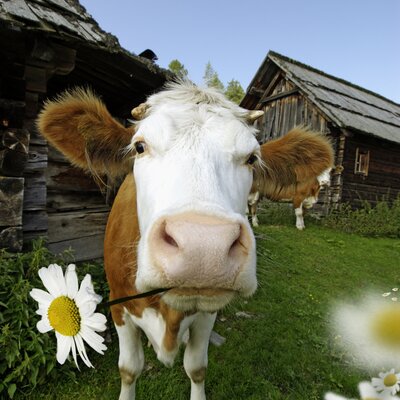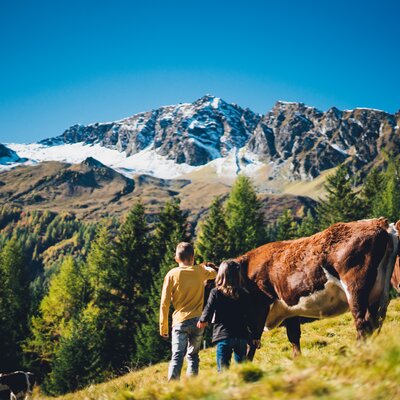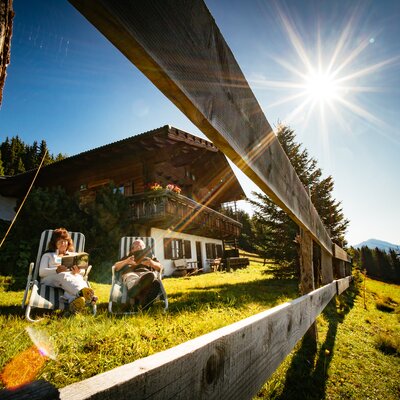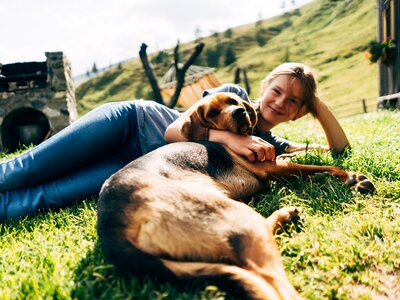
A well-coordinated team on the mountain pasture
If, like me, you don't have a dog and therefore don't know how to handle the animal, you can't give any practical tips. That's why I met up with Sonja Oberhuber on a Carinthian mountain pasture to ask her about what you should bear in mind with a dog on a mountain pasture so that everyone is happy: Alpine hut holidaymakers, i.e. dog owners, mountain and Alpine hikers, Alpine hut managers, the Alpine hut landlords, the cows and their calves, the free-roaming animals on the Alpine pasture and, finally, dogless guests.
Sonja's family dog is a Border Collie, which is a sheepdog by nature and which she can look after well at home in a large house with a large garden. So my first question to her was: "Do you and your family always take the dog with you on your sometimes extensive mountain and alpine hikes, but also on alpine hut vacations?"
Without giving it much thought, she says: "Yes, actually. It's only when I know there are going to be climbing sections that he stays at home. That's not for him. But I also have to think about how long he can be at home alone. We're already very well attuned to each other, so it's good for everyone on the mountain."
What is the prerequisite for something like this to work smoothly? Sonja says: "Of course, it takes a few things. Firstly, humans and animals have to master some basic commands, because without discipline nothing works. Then I need to know what I can expect my pet to do. The paths have to be "dog-friendly", for example without climbing sections. By the way: beware of information about paths suitable for dogs, especially from people without dogs. I also need to know how long I can take my dog with me, as dogs are known to sleep a lot. I have to plan enough long rests. By observing my companion closely, I can learn a lot so as not to overtax him. Over time, you become a good hiking team, so to speak."
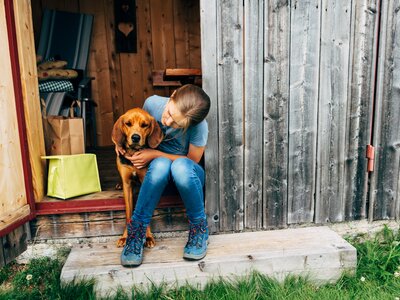
Now it's off to the alpine hut
And what do you take with you to the mountain hut for your dog? Sonja lists: "The usual dog bed, enough of the usual food, water and food bowl, treats, enough walking bags, not too few dog toys so that no dog damages walls or furniture - which, by the way, could have to do with a mineral deficiency in the dog." I would add: If your dog moves around in front of the hut, a long lead makes a lot of sense. I've seen this at many mountain huts and the animals get used to it very quickly. Even a fence doesn't stop many dogs from simply disappearing. A runaway dog on the mountain pasture can be very nerve-wracking.
And what does Sonja think of the fact that she has to pay a dog boarding fee for her dog's stay in the mountain hut? She says: "Yes, that's fine as long as it's within reasonable limits, because what costs nothing is probably worth nothing. This also documents the fact that my dog is a living being in its own right and should feel comfortable in the mountain hut. In return, however, I can also demand that certain things are available for my dog, such as his own hard-wearing towels or possibly food and water containers."
Which brings us to the golden tip!
When renting a hut, clarify whether dogs can be brought along at all. This is possible in most cabins. Don't conceal the size of your dog either, as a large animal can become a problem in very small cabins. And be honest about the number of animals you have, because I have seen dog owners arrive with five unannounced animals. This is simply unfair to the owner of the hut, but also to the dogs. Also make sure you clarify what is available for your dog in the hut. If you keep all this in mind, your stay at the mountain hut during the most beautiful time of the year will be pure joy for both humans and animals.
Notburga Samrock
12 Article(s)
